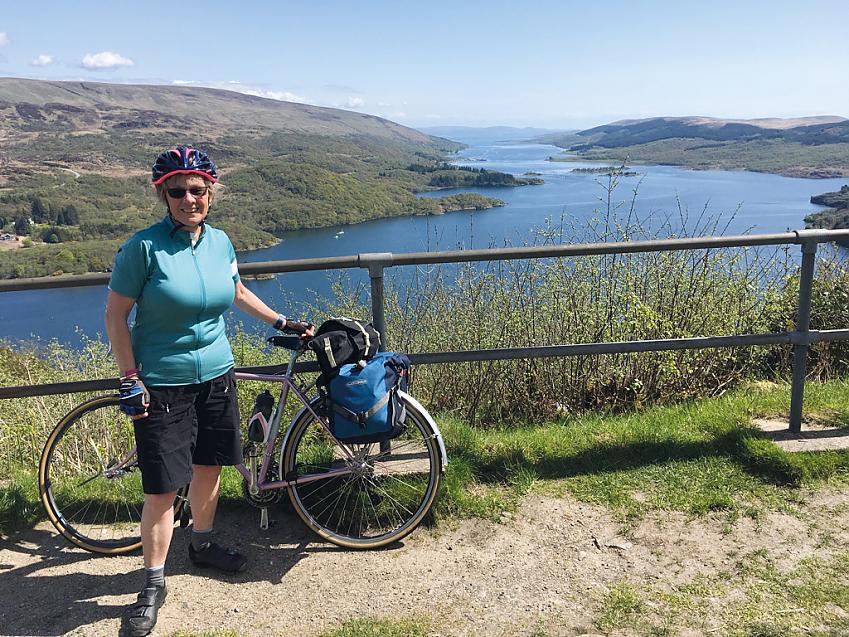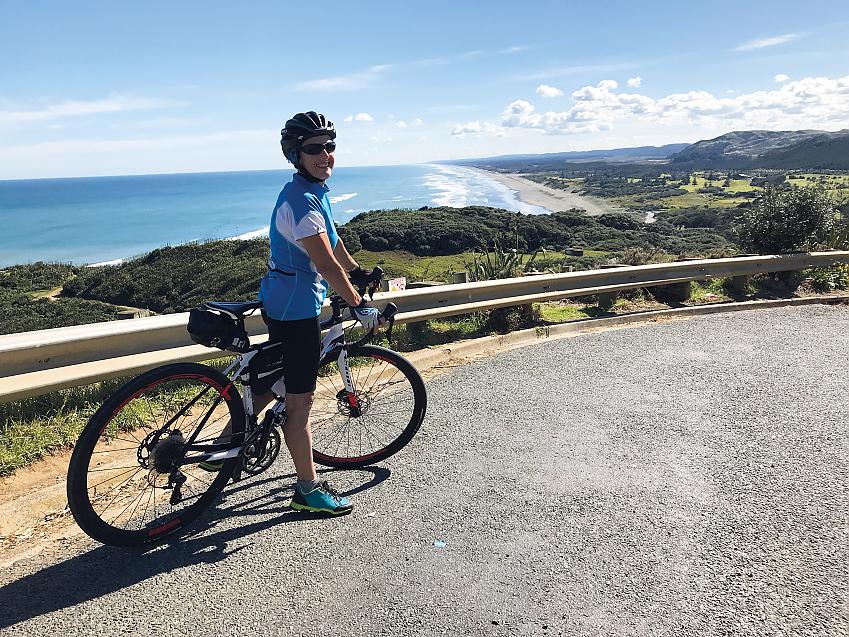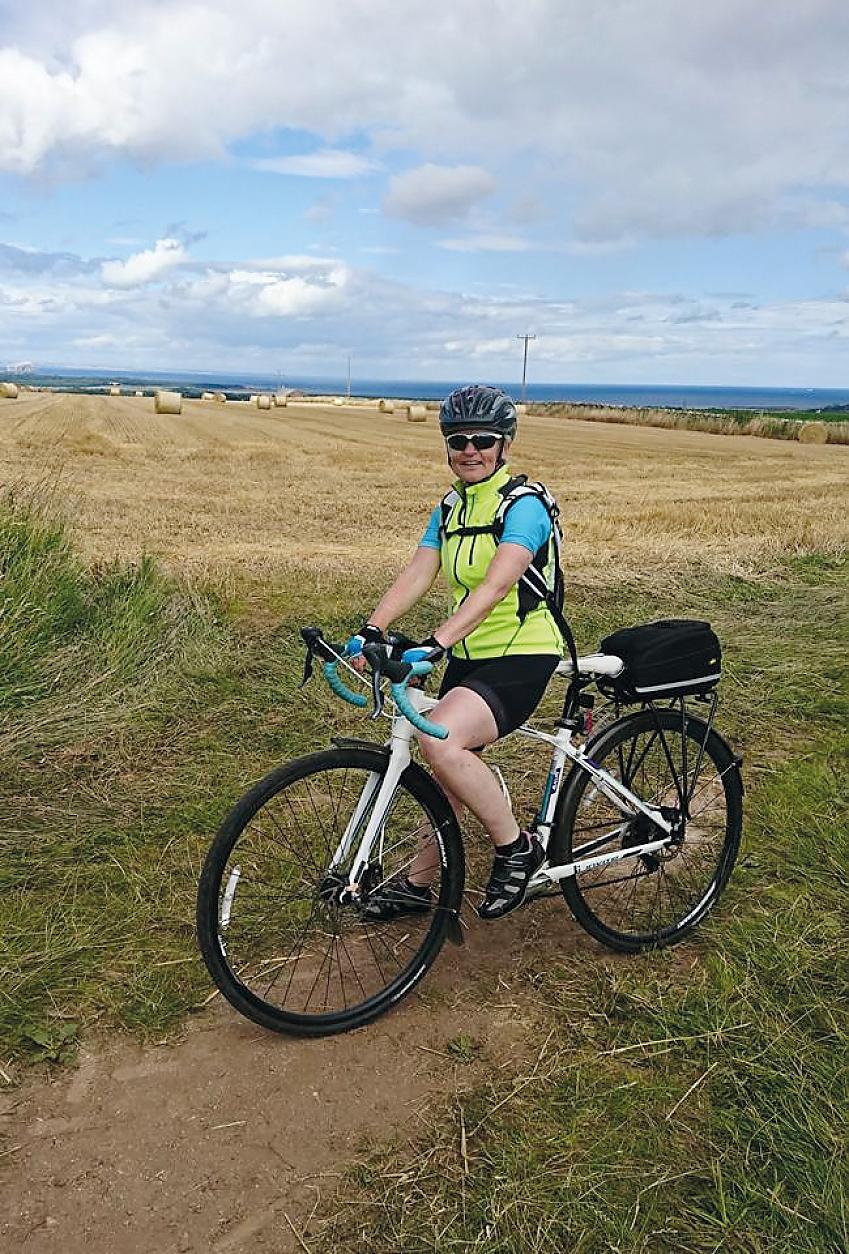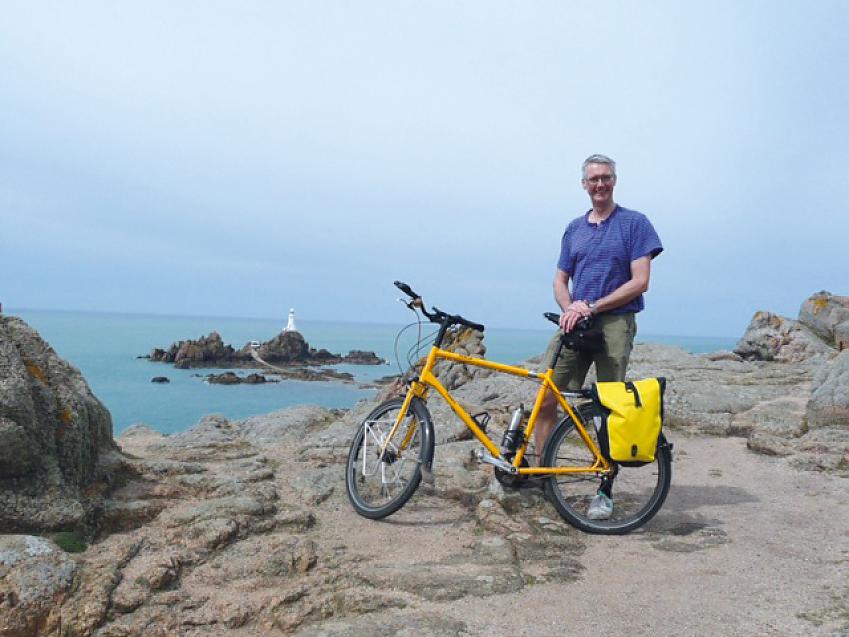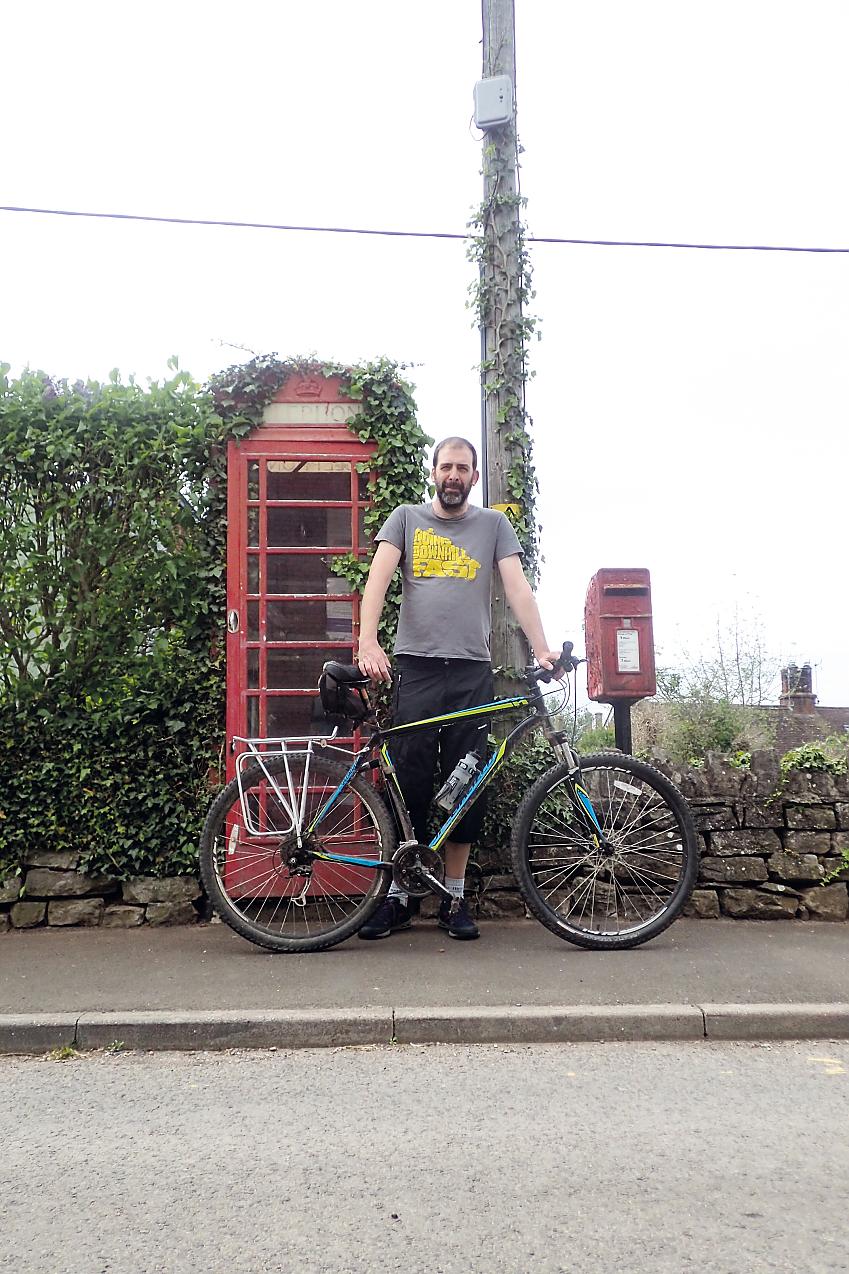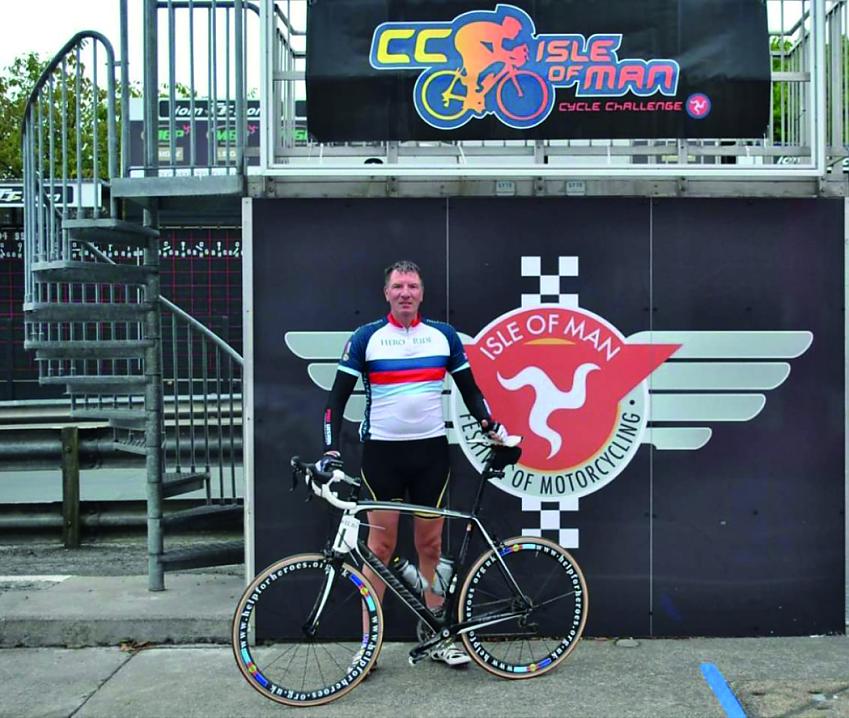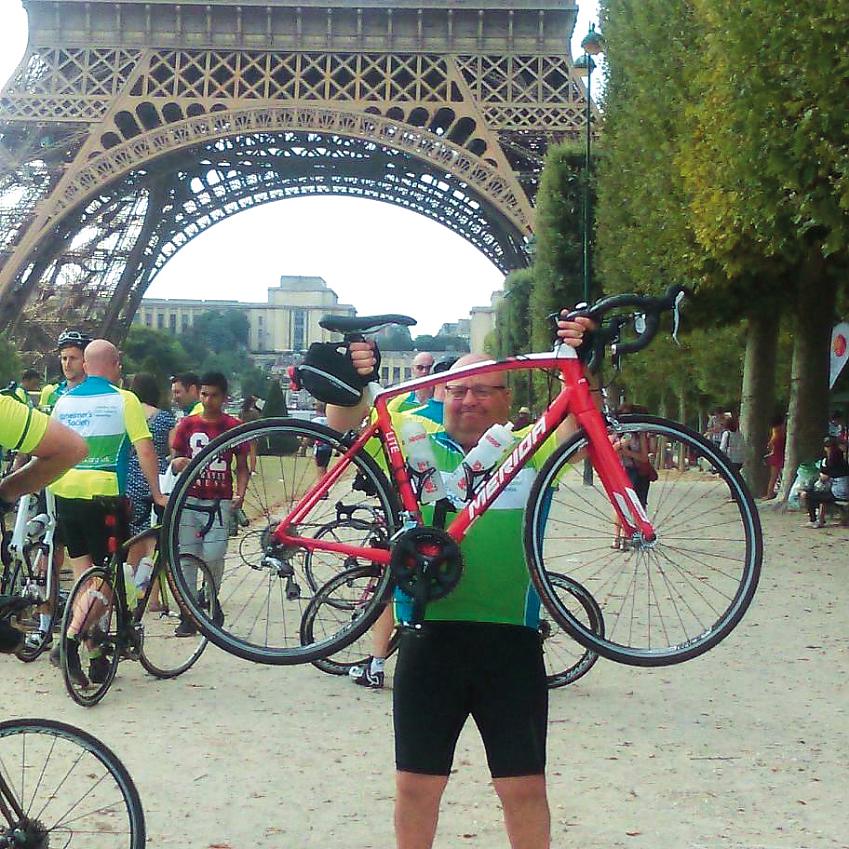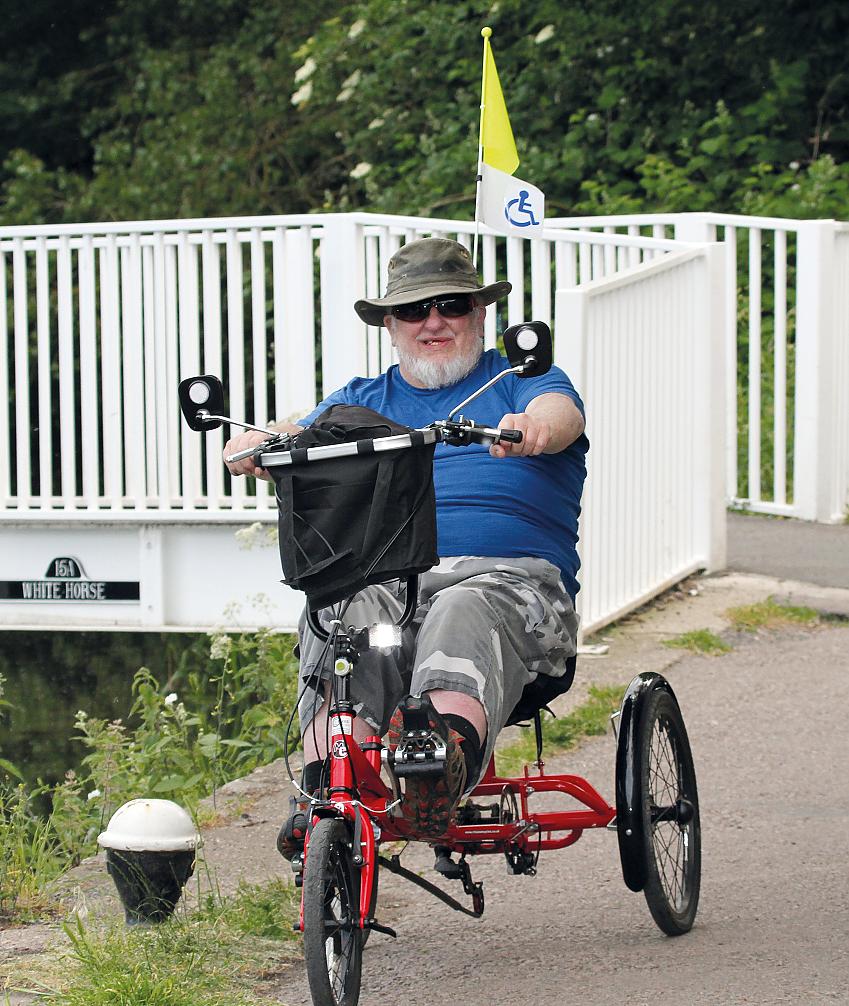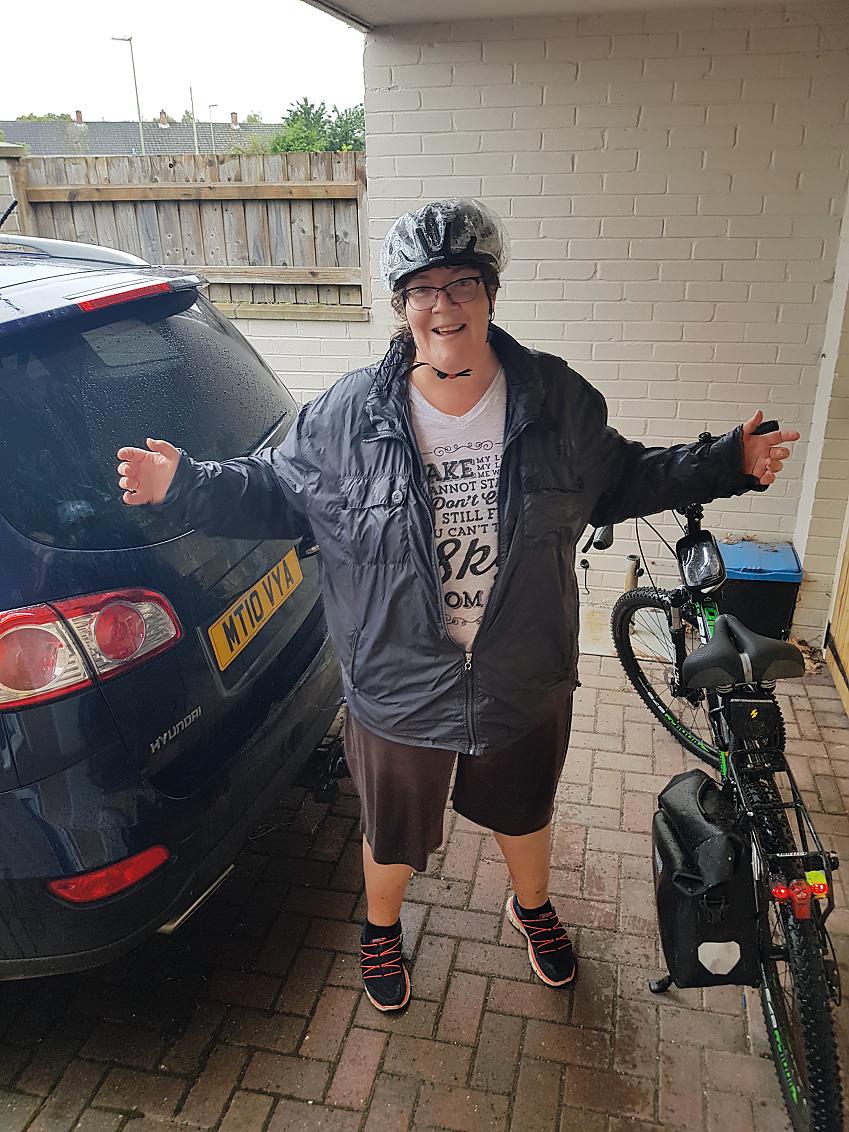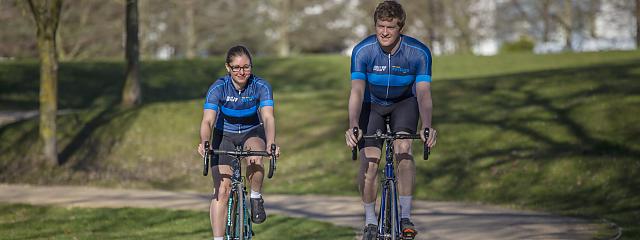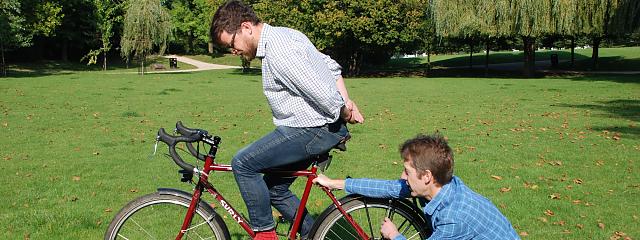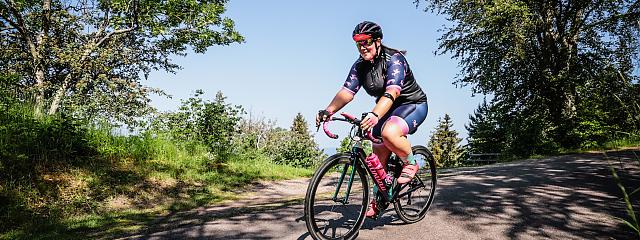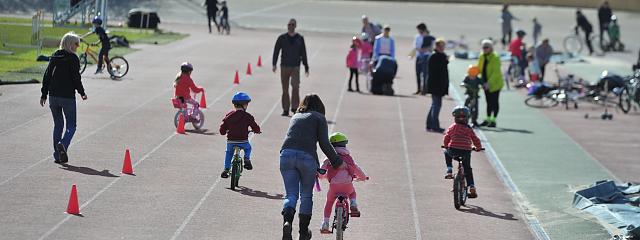
Size wise: Advice for short, tall or heavy cyclists
Size wise: Advice for short, tall or heavy cyclists
Spare a thought, when thinking of buying a new bike, for those cyclists whose bodily dimensions lie beyond or at the edge of the range catered for by mass-manufacturing. People, cyclists included, may come in all shapes and sizes, but variation in height and weight is not distributed evenly across the population, instead fitting the classic ‘normal distribution’ bell curve. So there are a lot of average-sized cyclists of either sex and plenty of fairly large and fairly small ones, but few at the extremes.
Unsurprisingly, bike – and, in some cases, component – manufacturers make their products in sizes they hope to be able to sell in sufficient numbers to make a profit, which can make finding a bike and size-dependent items such as clothing tricky for the exceptionally tall, short or heavy rider.
What constitutes ‘exceptional’? ‘Heavy’ should be an easy one but somehow isn’t, not least because quoted weight limits vary widely. A lightweight, competition-orientated component, such as a carbon fibre road bike fork or wheelset, might have a rider weight limit as low as 85kg (13st 5lb).
As a rule of thumb, check with the manufacturer or retailer if considering a lightweight machine and you weigh more than, say, 90kg (~14st), unless a higher weight limit is stated. That said, a 120kg (18st 10lb) cyclist should be able to find a suitable touring or off-road bike easily enough; such machines are generally strongly built.
Bigger and smaller frames
‘Exceptionally tall’ is a little easier to determine. A little over a decade ago, Cannondale offered from stock a 66cm version of the aluminium CAAD5 frameset, which easily catered for a rider of 2.06m, or 6ft 9in. With few buyers, it was phased out and the US manufacturer’s road bike size range now runs to 63cm. This will fit a rider of 1.95m (6ft 6in).
Canyon, meanwhile, makes road frames with a longer top tube which, with a suitable seatpost, will accommodate someone of around 2.05m. Even larger cycles may be available off the peg but, in effect, if you are taller than 2m or significantly heavier 120kg than you may find your options severely limited.
One of them is to get in touch with a custom frame builder. Another is to consider one of the companies devoted to making cycles for the very tall or heavy rider. Typical of these is DirtySixer, a US company building off-roadstyled bikes with large (32in and 36in) wheels in a range of standard sizes for riders from 1.95m (6ft 5in) to 2.23m (7ft 4in), with custom builds available for riders over 2.25m tall.
Exceptionally small adult cyclists have it easier, since, besides a custom build, there’s always the option of a bike made for a tall child or adolescent. A typical road bike manufacturer’s adult frame sizing range may start at around 46cm, which should fit someone of around 1.56m (5ft 1in). As frame size decreases, toe overlap becomes an increasing problem – particular for small drop-bar bikes, which have a shorter top tube than their flatbar counterparts – unless the wheels are downsized from 700C to something like 650C or 26in.
It’s harder to buy children’s or adolescents’ bikes of suitable quality; they tend to be made cheaply and heavily. There are exceptions, of course, such as Islabikes. The Luath, a cyclocross-derived all-rounder, is available in 700 Large and 700 Small models for riders over 1.56m and 1.48m respectively, both on industry-standard 700C wheels. The frame geometry is appropriate and components such as cranks and brake levers suitably-proportioned. Bear in mind that short adults tend to be a lot heavier than children, and that bodily proportions may differ.
The sizing overlap with quality children’s bikes and the smallest ‘adult’ models from most major manufacturers means that it should be possible for almost any cyclist of small stature to find a bicycle off the peg. Riders shorter than 1.48m (4ft 10in) can look at smaller children’s bikes – or go custom.
Components that fit
Frame size is not the only factor affecting the performance of bikes for larger cyclists. While DirtySixer uses oversized wheels to keep the bike as a whole looking in proportion, small wheels are inherently stronger and help keep down the weight of what may be a hefty machine. The US firm also employs aluminium for its frames; while steel may seem the obvious choice for the heavy rider, welded aluminium also makes a lot of sense, as it is relatively easy to make a very stiff frame, using substantially oversized tubing, without adding too much weight.
The crankset also needs careful consideration when building a cycle for the exceptionally tall or short cyclist. Very long legs, for example, may need cranks longer than the usual industry maximum of 177.5mm. A useful guide for general riding is to choose a crank length 21% of the inseam (measured in bare feet). Cranksets in lengths of up to 220mm are available from Zinn Cycles and Andel, and both offer extra short cranks (shorter than 165mm) for the shorter cyclist. (Cranks can also be cut down to fit, with new pedal holes installed.) Remember that very long cranks will need a suitably lofty bottom bracket to avoid the risk of a pedal strike when cornering.
Better quality brake levers have reach adjustment, so that they can be set closer to the handlebar for smaller hands. Flat bar levers often have a reach adjustment screw (cable models) or knurled knob (hydraulic ones) set opposite the lever itself.
Shimano and Sram integrated shift/brake levers for drop bars now come with similar reach adjustment screws hidden under the hood; peel back the covering to reveal it. For older STIs, Shimano produce a shim that brings the lever closer to the bar. Riders with particularly short fingers – due to dwarfism, for example – may find electronic shifting such as Di2 easier, as it doesn’t require a long lever throw.
Cycle clothing in small and big sizes
As with cycles, so with clothing: fewer items are made in very large sizes – but that’s not to say they’re not available. A good place to start is at oversize specialists Fat Lad at the Back, where you will find properly-designed, functional cycling kit, from short-sleeve jerseys to big tights and more, made to fit the larger cyclist.
Prendas Ciclismo, purveyors of stylish clothing from a wide range of sources, stocks outsize clothing including jerseys in sizes up to 6XL. It is, of course, worth remembering that some ‘outdoors’ activity clothing can prove eminently suitable for cycling, which significantly extends the range of possibilities.
Shoes specifically designed for cycling feature, as a rule, stiff soles to spread pressure from the pedals and, these days, some sort of fixing arrangement for one of the several clipless pedal systems available, which secure the shoe to the pedal for improved pedalling efficiency. These pedals are not obligatory – many cyclists enjoy riding with flat pedals and ordinary shoes, and any shoes with a grippy sole and reasonably stiff sole will prove acceptable if you can’t find ‘cycling’ shoes in a large enough size.
That means feet too big for an EU size 52 or UK size 15.5, since the ever-reliable Shimano offers several models in this size, including the TR5 SPD-SL, RP301 SPD-SL and ME301 SPD. Other manufacturers worth a look if you have slightly smaller feet include Lake, with models up to size 50, and Specialized with shoes up to size 49.
The custom option
Can’t easily find a bike big, small or sturdy enough for you – or not in style you prefer? Ordering a made-to-measure cycle may be the solution. I was recently asked to build a long-distance, flat-bar touring cycle for a rider 1.88m (6ft 2in) tall and weighing 140kg (22st). He had previously toured on a Genesis Tour de Fer – itself solidly built. What made the project more interesting was the considerable quantity of luggage he proposed to carry. I figured on the whole rig weighing close 200kg once rolling, which meant careful attention to components such as wheels, tyres and brakes as well as to the frame itself.
The wheels proved straightforward to specify; with rims of smaller diameter than the 27.5in/650B or 29er/700C alternatives, 26in mountain bike wheels are inherently the stiffest of the three sizes. We went for durable Ryde Sputnik rims laced using Sapim butted spokes and rolling on Schwalbe Marathon tyres with, perhaps surprisingly, Shimano Deore Trekking hubs – chosen precisely because they haven’t been made with weight-saving in mind.
A Shimano Deore M610 Hollowtech II crankset uprated with a Saint external bearing bottom bracket assembly harnessed rider power while Magura HS22 hydraulic rim brakes took care of braking duties.
The real fun, however, came when drawing up the specification for the fillet-brazed steel frame. Sufficient strength is, of course, a primary requirement, but frame stiffness is at least as important since it plays a vital part in handling, stability, durability and power transmission. Built to take a low-rider front rack with twin panniers, the brazed-construction steel fork used a heavy-duty 1 1/8in steerer, micro-fusion cast crown and sturdy, thick-walled Reynolds EB713 blades.
Stiffness was also the key consideration when selecting the tubes for the main and rear triangles. ‘Oversized’ tubes greatly increase frame stiffness, especially in torsion, so down on the drawing board went a 31.7mm top tube and 35mm down tube in preference to the now-standard 28.6mm top and 31.7mm down tubes. Chosen in place of the usual 28.6mm example, the externally butted 32.7mm seat tube also had the advantage of accepting a fat 31.6mm seat post clamped, in this case, by twin M6 bolts for maximum security.
To provide clearance for the 26×2in tyres, I chose S-bend seat and chain stays, the former of 19mm diameter, the better to cope with the compressive stress of the rider’s weight and the twisting forces likely to be exerted on its cantilever bosses by the hydraulic rear brake. A bi-laminate bottom bracket reinforcing sleeve on the seat tube and a beefy chain stay bridge made using a fork leg off-cut ensured adequate stiffness under the rider’s considerable power.
When it came to specifying the bars and stem, we opted for entry-level components by PRO. Less expensive components are usually heavier and therefore contain more material than lightweight parts of the same size, which is a good thing in terms of overall stiffness and worth bearing in mind for the heavier rider contemplating their bike’s specification. Overall, the cycle came in at around 12kg including racks and mudguards.
My bike: Short cyclists
Pam Styles
5ft
Bike: Custom Longstaff tourer
The frame was made to measure for me in 1998 by George Longstaff, with an 18in frame, short top tube, and to fit 26in wheels.The frame is built with a mixture of Reynolds 531 and 653 tubes and has an extended head tube to give a more upright position for touring. I built it up with mountain bike wheels, slick tyres, 38cm handlebars, and 165mm cranks with very low gears. It has down tube shifters which result in smaller, simpler brake levers for small hands.
Stephanie Dixon 4ft 11in
Bike: XS Scott Solace 20
My overriding requirement, at 150cm tall, was a small frame. I’ve had size S bikes before but even they were a bit large; the Scott was one of the few models I could find in New Zealand (where I live) in XS. The handlebar has been tilted upwards and thus back a little as well, so I’m not too stretched across the frame. It has a high front end, giving a more comfortable and upright position for a road bike.
Mairi Anstruther
5ft 1in
Bike: Liv Invite gravel bike
I’ve cycled since I was a teenager, and wanted a bike that would give me speed on and off-road. Before purchasing my Liv Invite gravel bike, I had a test ride and was delighted by the fit of the bike. I was so impressed that I later bought a Liv road bike as well, so I’d have a lighter, faster option for days when I will be sticking to good roads. I’ve not felt the need to make any adjustments to either of the bikes other than to add Shimano SPD pedals to them.
My Bike: Tall cyclists
Adrian Middlewick
6ft 6in
Bike: 62cm Thorn Nomad
I was attracted to Thorns because they are built for the Rohloff hub and come in larger frame sizes. They are also very rugged, with strong wheels and 26×2in tyres. Thorn forks come with a very long steerer tube, which I have not cut down as it allows a comfortable riding position. You can select your own specification; mine has S&S couplings (so it’ll fit in a hatchback), 180mm cranks, a SON dynohub, and Supernova lighting.
Simon Parkin
6ft 7in
Bike: XXL Specialized Hardrock 29er
Bikes had always been too small for my 6ft 7in frame. Then I found a Specialized Hardrock 29er with a XXL frame on the Evans Cycles website. The Hardrock is built like a tank and has got me through several off-road sportives and a three-day camping trip to St Ives. It needed no modification to fit my height. It’s huge alongside other bikes but because of the 29in wheels it looks in proportion.
Martin Burrows
6ft 6in
Bike: 61cm Specialized Tarmac Sport
This is my Specialized Tarmac Sport carbon fibre road bike. It’s a 61cm model with 175mm cranks. I got a Specialized on recommendation from Mammoth Cycles, and I had a nice bike fit done. This involved swapping the seatpost for a Thompson extralong model. The bike handles like a dream, even though it’s big.
My Bike: Heavy cyclists
David Bedford
20st
Bike: Merida Ride 93
I bought the bike in 2015 and have rebuilt it twice due to wear and tear. When I got it, I decided to enter the 2016 London-to- Paris cycle ride for the Alzheimer’s Society, which gave me a year to prepare. Since then I have used the bike for extending my daily commute to work, often covering 30-50 miles a day between the two trips. I attempted a 300km audax on it last year, sadly bailing at 260km. I’m 50 in 2021 and hope to do an epic ride to celebrate.
John Tompkins
20st Bike: Mission SRT200 semi-recumbent trike
I’ve not been able to ride conventional bikes since I became disabled; I thought a recumbent would help me get some exercise. I have changed the 16in front wheel to a 20in one to make it ride bumps, potholes etc better. That meant changing the fork as well. I reduced the cranks from 170mm to 140mm to make pedalling more comfortable. I also fitted a pedal-assist motor to help with the hills until I get fit.
Michelle Kneen
24st
Bike: Riddick mountain bike
I needed something strong that would take my weight, so a lightweight tourer or road bike was not an option. I had the handlebar height raised as I could not lean forward very much, and changed from a straight bar to one with a 20º backsweep. I’ve had the original pedals replaced with mountain bike flats; I’m scared of using clipless as I have had a couple of falls. My first long ride out was 10 miles. (It was long for me at the time).
Things to look out for:
As frame size decreases toe overlap becomes an increasing problem for drop-bar bikes unless the wheels are downsized.
If you are taller than 2m or significantly heavier than 120kg you may find your options for a bike severely limited.
Steel may seem the obvious choice for a heavy rider, but welded aluminium also makes sense.






